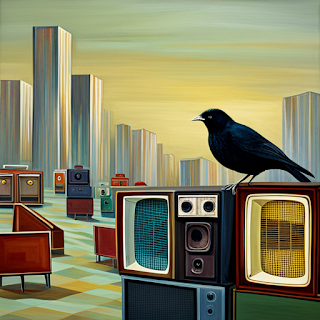At what age do we become capable of love? (Deleted Notes & Queries Response, 12th June 2022)
I am sorry to report that a moderator for The Guardian, paused in the act of massaging scented oils into the feet of Owen Jones just long enough to delete my response to this week's Notes & Queries question.
You may read it below in all its abridged, just under 5000 characters glory:
At what age do we become capable of love?
“Our neighbour is the London Underground,” said Ann Cromack, as she led me, at a brisk pace, through the sub-basement of the British Museum.
“We share a common wall with the Central Line,” she clarified, inserting a key into the lock of Room 45, which is also known as The Temple of Aphrodite. The name, which evokes images of Doric columns bleached by the Mediterranean sun, belies the disquieting reality of tall cabinets, filled with disembodied arms - rendered mostly in marble, many missing fingers - layered in shallow drawers with sliding glass lids, like the macabre trophy display of a prolific and well-organised serial killer.
“Dr Peter Brook started the repatriation at the behest of his wife, Thalia, in the 1950s,” Cromack explained. She fiddled with a bank of light switches, next to the door, until she had achieved what she regarded as the correct distribution of illumination. “After he retired, he palmed it off onto Eddie Lucas. I was handed the reins following Eddie's head-first plummet from grace.”
She kicked a cat bed, trailing a dishevelled red blankey, out of my path.
“Toby's having his mid-morning sulk,” she explained. “He'll be down later.”
That explained the claw marks that had gouged the varnish off the bottom of the door. One never really knows in a museum that is rammed to the gills with classical antiquities, whether something of ancient, and perhaps also malevolent, provenance might have let itself out of its glass case and gone for a wander.
“These are all from the amnesty?” I enquired.
“All pilfered,” said Cromack. “In the early days when the museum put regular notices in The Times the response was overwhelming. Peter wrote hundreds of letters to museums all over the world, asking them whether they possessed any statues of Aphrodite or Venus, who were missing arms. They would send back photographs. He made plaster casts of any promising candidates so they could test the fit. It's still British Museum policy to go through the whole glass slipper routine with any armless statue that passes through our portals, as they do in the touring exhibits.”
“William Gowland was my favourite of the Planetary Romanticists,” I said. “That sounds like damnation through faint praise.”
“I picture floppy-haired young men in blouses, reclined on mounds of silken cushions, with the backs of their hands pressed against their fevered brows,” replied Cromack. Behind her, a tabby cat padded nonchalantly into room. Taking the red blankey in its mouth, it began to drag its basket back into the centre of the room.
“You're referring to Charles Staveley's painting 'The End of Travels,” I said. “Did you know that it was painted in a Turkish opium den? Most people think that it depicts the death of Gowland, but he didn't shuffle off his mortal coil until he was in his 80s."
“He did leave us with an awfully big mess to tidy up,” sighed Cromack. The cat pressed its arching body forcefully against the leg of her jeans.
I had been contemplating a witticism; along the lines of Gowland and his admirers regarding their act of cultural vandalism as 'armless', but thought I might be venturing down too well-trodden a path.
In common with many wealthy young men, the poet had embarked upon a grand tour of Europe and had eventually fetched up in Greece where, for unaccountable reasons, he had hacked an arm off a statue of Aphrodite and returned home with it. When his daughter, Agnes, was born, he placed the arm in her crib so that she might “know love in its most pure of forms.” I imagine that his wife, Rebecca, was thrilled to hear this.
“One armed with love,” I said, quoting Gowland's own verse, to which the centuries have not been kind, weathering away the veneer of profundity to expose the hackneyed core.
Gowland was the originator of an unfortunate trend that saw a wave of romantic young Englishmen descend upon the classical ruins of the continent like locusts, divesting the arms from any statue that might be the mistaken for the goddess of love. They handed down these severed stone limbs to their offspring, or gave them away as christening presents. Before long there were factories in London churning out copies. There exist daguerrotypes of plump Victorian children, in their font robes, with the fingers of disembodied marble arms clamped onto their wrists.
This practise continued well into the late 20th century. As a baby, I slept under a mobile that, in addition to the usual nursery rhyme characters, jiggled a pudgy doll's arm above my head like a sword of Damocles.
“Did it have any effect?” enquired Cromack.
I shook my head.
“The first time I was conscious of love, was entering my grandparent's house. You know what it's like to have young eyes: The sudden transition from sun glare to the dark of the kitchen was so jarring that it hurt. As my vision came back into focus, I saw my grandmother as if I was seeing her for the first time, and I knew that I loved her.”
I hope this is of help.




Comments
Post a Comment